Have you wondered what the simplest and quickest solution is to remove clogs in your toilets? Have you ever faced an uncomfortable clogging situation? I bet each of you has faced the clogging problem at least once in your life, and randomly calling the plumbers again and again increases the burden on you. So, is there a cheap and simple way to unclog your toilet? I am introducing you to a fantastic tool that cleans the clogs without putting much pressure on your pockets.
A toilet plunger is a tool that might effortlessly remove the clogs in your toilet drain pipe. The rubber cup exerts tremendous pressure to suck the impurities and clear the path for the water flow in the sink or toilet pipe. But can you perfectly use the plunger to remove the clogs? I guess you are searching for proper guidelines on how to choose the perfect plunger for your toilet, so here in this article, I will briefly discuss the various types of plungers and the proper guidelines on how to use them.
| Plunger Types | Ideal for… |
| Sink Plunger |
|
| Flange Plunger |
|
| Beehive Plunger |
|
| Accordion Plunger |
|
| Automatic Plunger |
|
| Taze Plunger |
|
What is a Toilet Plunger?
The demand for exclusive toilet products has increased over time. Now toilets need a variety of support utensils that may help perfectly organize the whole toilet ambiance. Toilet plungers are one of those utensils that really keep the toilet fresh. So what actually a toilet plunger is?
A plunger is a perfect commodity that is used to clear the blockages in drains and pipes. It simply contains a rubber cup that sucks all the clogs and clears the pipe. It has a sturdy, simple elongated handle that is often made from plastic, wood, stainless steel, or aluminum, and it is the primary and simplest solution to unclog the impurities in the sewage system.
6 types of plungers that you can use on the toilet
The market has tons of plunger varieties in quality, shape, size, and price. You may be perplexed about choosing from those plungers, so for your convenience, I will add some of the types of plungers that have a wide range of uses, and the use is based on the nature of the sink or toilet.
Standard Sink Plunger
This type of plunger is the most common of this kind. You can see this type of plunger in most houses. There is a rubber suction cup attached to the end, and usually, the handle is made of wood or plastic, but there could be other options available in the market that may have been very rare. This type of plunger may be proven to be handy, and you can use them in the sink and toilet to clean away the clogging.
When to use: You can use this only on the flat surface, like kitchen sinks, bathroom sinks, tubs, basin outlets, etc.
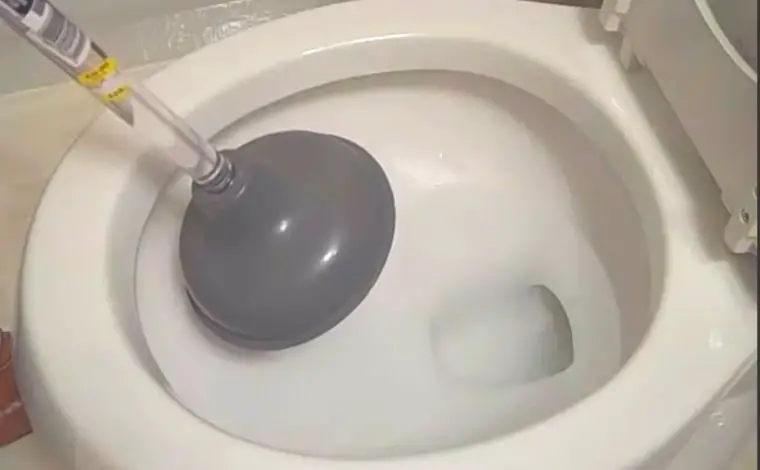
Toilet Flange Plunger
This type of plunger is similar to the standard sink plunger as both have almost the same structure, but you can differentiate them with their rubber flap across the cup, known as the flange. This flange is designed in a way that it can fit through the basin or drain opening. This flange plunge can be used in the drain and the sink.
When to use: Any type of Toilet and kitchen sinks.
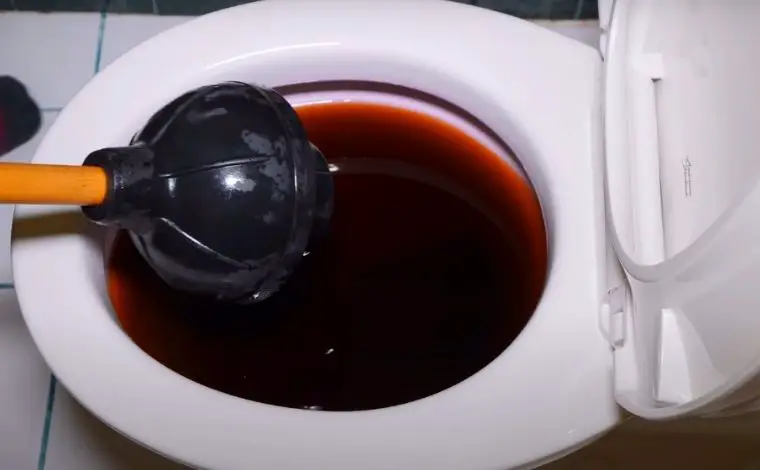
Beehive Plunger
This plunger is compatible with almost all kinds of toilets, like traditional and high-efficiency toilets. The hive is hollow inside, and this is designed to create pressure back and forth to the toilet.
Purpose of using this toilet plunger: You can use this in the old and new high-efficiency toilets and those with oblong-shaped drains.
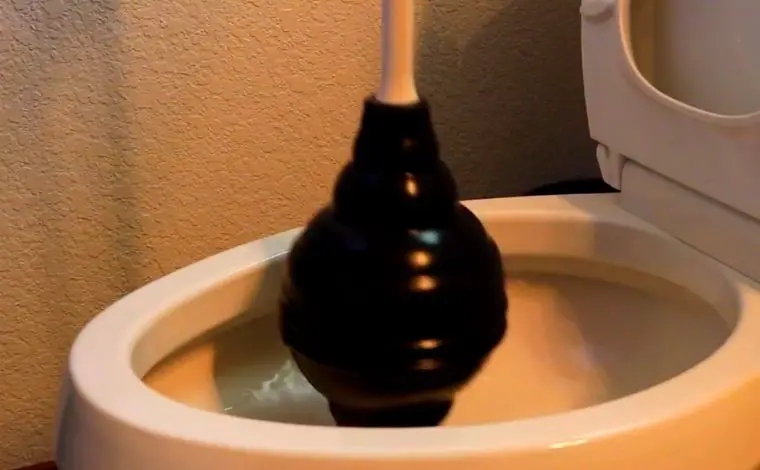
Accordion Plunger
This type of plunger is considered the strongest plunger of all of its kinds as this plunger can create huge pressure in the toilet system. This plunger is designed as an accordion-style ridge, and the plastic ridges can capture more air than any other plungers. Mainly the ridges hold air, and when the plunger is compressed, it pulls out all the clogs. The mechanism is to create a full vacuum seal for the suction. But the plunger is needed to submerge into the water fully to get the maximum pressure. This kind of plunger is bigger than most plungers, so these can be used in sinks or other drains rather than the toilet.
Best use: Toilets only
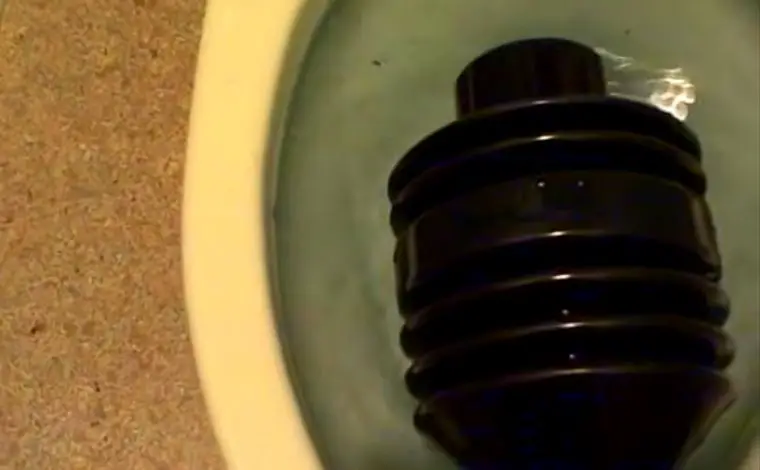 Automatic Toilet Plunger
Automatic Toilet Plunger
Nowadays, everything is turning automatic, and the toilet plunger is no exception. A new version has come into the market, gaining popularity among users. Generally, the plunger works with a carbon dioxide chamber. The process is to push the nozzle into the toilet drain and then spread the carbon dioxide fumes into the drain to remove all the clogs. But this plunger is not as popular as the others as it is costly, and the cartridge is to be replaced after some time, which seems pretty costly.
Purpose to use: It’s compatible with cleaning the toilets only.

Taze Plunger
Finally, we have the Taze plunger, which is not compatible to use in sinks and the toilet, rather than professional plumbers use them in bigger pipes in the industry and commercial aspects. Taze plunger is really common in solving rigid and obstinate clogging, but it is not a traditional type of plunger.
Best use for: It is best for professional plumbers to clean the huge drain pipes of the Commercial and industrial zones.
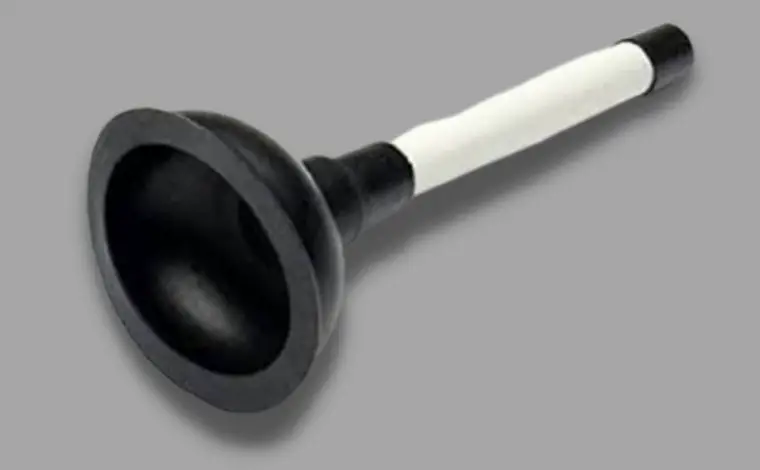
How to Use a Plunger for Effective Toilet Unclogging?
Plungers are the ultimate saviors to maintain your toilet and keep it unclogged in every possible aspect. But it is not enough to just purchase the plunger; it is also necessary to know the use of the plunger. I will illustrate step-by-step guidelines to understand the proper use of the plunger,
Pick up the right plunger: As I have seen, tons of plungers are available on the market, but not all kinds of plungers are suitable for your toilet or sink. It would help if you used your acumen to select the perfect plunger that will fit your kitchen sink or toilet.
How it works: Plunging in a to-and-fro manner will not do the work for you; everything has a proper technique that may fix the issue. That’s how some perfect plunging techniques may simplify your work and save time. It is always suggested not to plunge at an angle as that may not build enough pressure to squeeze out the clogs. That’s why you should plunge vertically, pushing the plunger up and down to get the most out of it. Another excellent tip is removing all the air from the plunger, as additional air may weaken the entire pressure system. Slowly press down the plunger to create a better seal with the sinkhole.
Submerge the plunger: Your plunger rubber cup must be fully submerged in the water; if there is less water, then apply extra water In the commode to immerse the cup; otherwise, it won’t produce sufficient pressure.
How to maintain: In order to keep your plunger durable and long-lasting, you must take care of the plunger. It should be kept parched and clean after use to avoid further tearing, ripping or yielding of unwanted bacteria and fungus.
Significant Considerations before buying a Plunger
We have seen that there are tons of plungers on the market, but not all varieties are compatible with our toilet. Before purchasing a plunger, you must be aware of some issues. Here I include some of the most significant aspects that must be maintained to get a perfect plunger.
Sturdy Material
Material is always an essential aspect of any kind of product, But in the case of the plunger, it is more common that you should check the quality before buying. For the purpose of compression and suction, you need a soft and flexible suction cup. Removing the clogs might require more effort if you buy a thick, rigid plunger. The suction cup and handles must be made of premium quality materials. The handles of the plungers are usually built with bare wood, stainless steel, plastic, aluminum, and many more. Always avoid those plungers with weak and thin handles, as they will bend or twist when cleaning the clogs. Thick and sturdy plungers will do the job for you.
Standard Handle Length
The length of the handle is always a significant thing to consider when buying a plunger. If you decide to buy a plunger, consider its handle length, as cleaning a toilet is messy. It would be a top decision to use a plunger with a 21 to 24 inches long handle to keep you secured from the splashing zone. 
Different Drain Styles
Not all the drains are of the same style. As technology advances, it tends to explore something new. The newly invented high-efficiency toilets have different shapes and sizes than those that precede ours. The draining is more oval-shaped, so not all plungers will adjust into the drain hole. You need to pick the latest designed plungers to continue the operation with the newest models of toilets.
Distinctive Shape and Function
The newest sink plungers in the market are more or less bowl-shaped and distorted sponge balls that are cut through in the middle. The biggest advantage is that it can suck more filth and hold more air, allowing the plunger to evacuate the maximum clogging. Shapes affect the functionality of the plunger as the difference in shape may fluctuate the air-holding capacity, which creates pressure to clean the clogs.
Final Words
Toilet plungers can be handy to rescue your toilet from being clogged. There are different kinds of plungers, so you need to select wisely; otherwise, you cannot extract any benefits. Generally, the standard toilet or sink plunger and flange plunger are the most common plungers, but if you want more extensive service, you can choose an accordion plunger or beehive plunger. And if you prefer everything automated, then the automatic plunger will be best for you. And the Taze plunger is for professional plumbers, and the uses can be more extensive as they are suitable for use in larger and bigger industrial drainage pipes. So the choice is simply yours, what is your need and which type is compatible with your toilet.
We are really lucky to have a hard-working, multi-skilled plumber on our team. Collin D. Gallegos, a professional plumber who has worked with us since 2012, is an expert in vent, septic, and drainage systems. He is a Certified Master Plumber and has worked on various commercial plumbing projects. He usually helps our readers resolve plumbing and pipe-related issues with a proper DIY troubleshooting and repair guide.